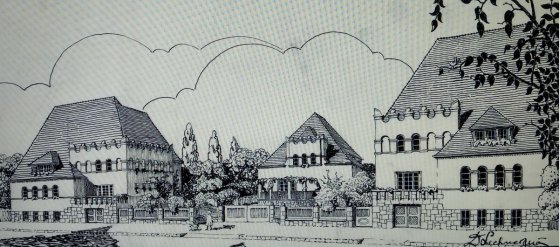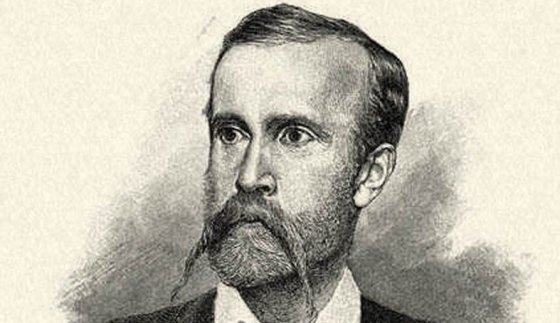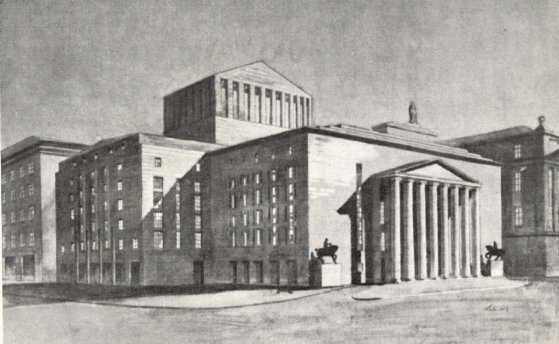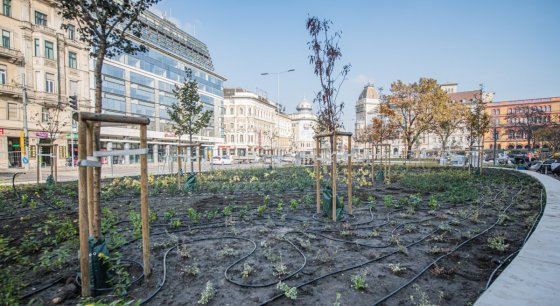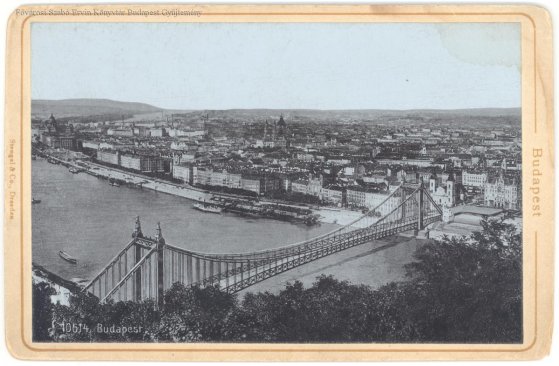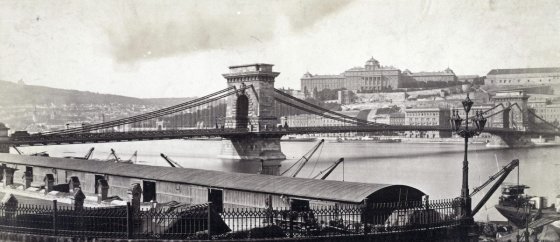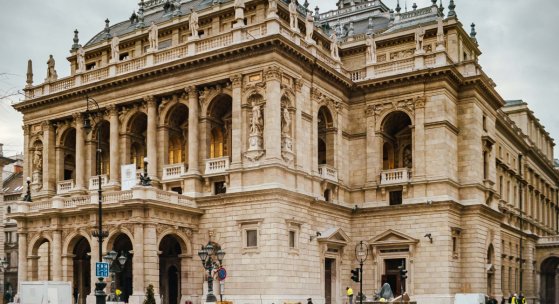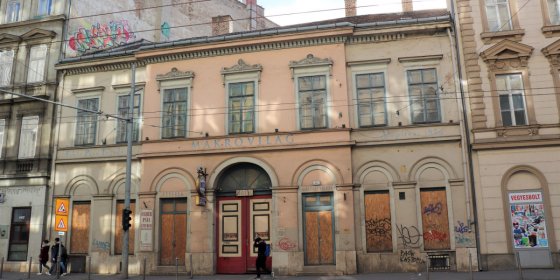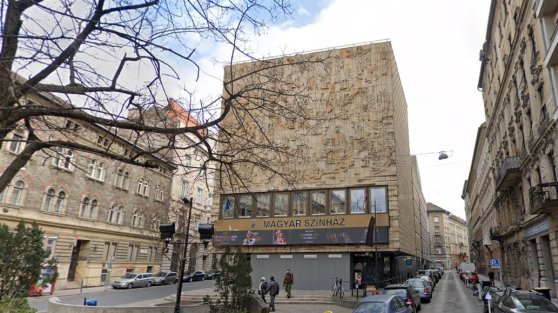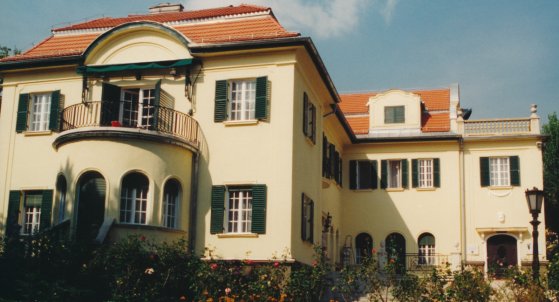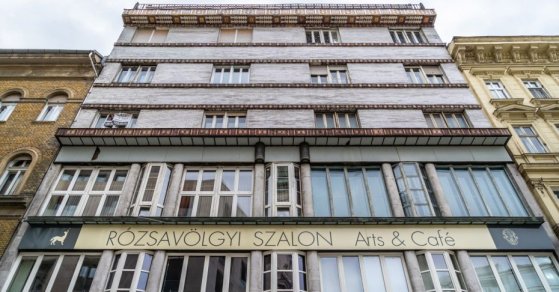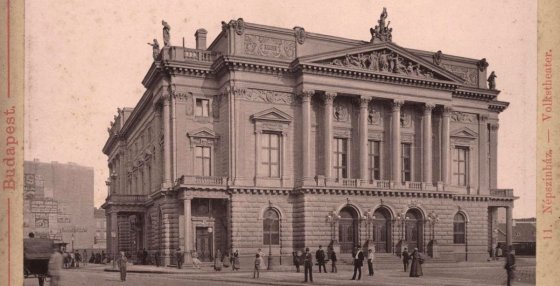 The „intertwined history” of the bridges and the city of Budapest
Which ideas and events have shaped the fate of bridges of Budapest and the cityscape? Alongside many other interesting facts, this question is also answered this newly published book by the Budapest City Archives, which introduces the history of bridges in Budapest.
The „intertwined history” of the bridges and the city of Budapest
Which ideas and events have shaped the fate of bridges of Budapest and the cityscape? Alongside many other interesting facts, this question is also answered this newly published book by the Budapest City Archives, which introduces the history of bridges in Budapest.
National Theatre
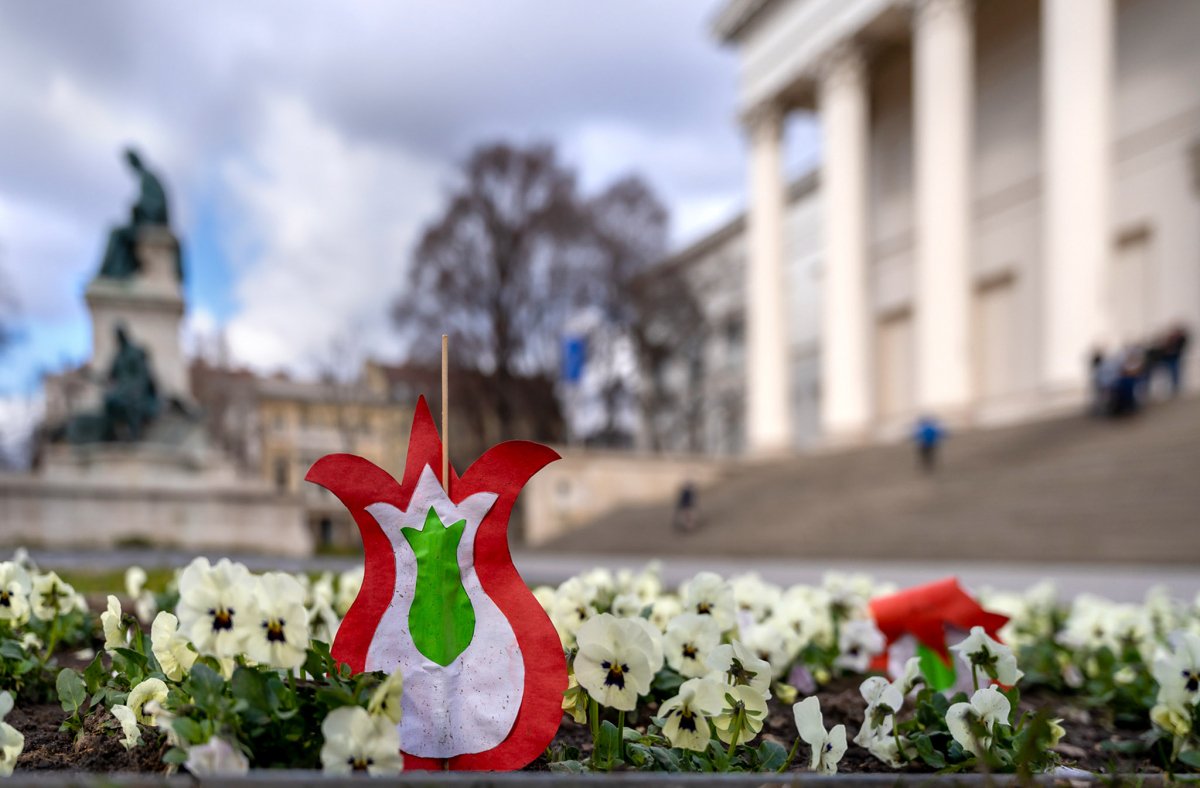 In the footsteps of Petőfi: A walk around the sites of the Revolution of 15 March in Pest and Buda
In the footsteps of Petőfi: A walk around the sites of the Revolution of 15 March in Pest and Buda
March 15, 2023 at 11:00 AM
The sites of the Revolution of 15 March 1848 in Pest and Buda can still be visited today, and even some of the buildings that played an important role in the events are still there: standing in front of the National Museum, the Landerer and Heckenast Printing House, the Locotenential Council and the Táncsics-prison, anyone can recall the events.
Where a movie star lived 100 years ago - Kálmán Rózsahegyi's villa
February 24, 2023 at 9:00 AM
Kálmán Rózsahegyi was one of the greatest actors of the first half of the last century, in addition to his stage presence, he also played in many cult films. For his fiftieth birthday, his fans wanted to surprise him with a family house, for which they started a fundraiser. The plans were drawn up by Jenő Lechner a hundred years ago, in 1923, and he created a sumptuous luxury villa with his brilliant idea and great sense of style. Three years later, the actor was able to occupy his new home after returning home from the United States of America.
Imre Madách, born 200 years ago, became a writer in Pest
January 28, 2023 at 9:00 AM
The young Imre Madách lived in Pest for three years. While completing his law studies at the University of Pest, he also got involved in social and cultural life. He regularly visited the performances of the Hungarian Theatre of Pest, attended concerts at the National Casino, but the highly educated young man also learned to paint, fence, and play the piano in the capital. His first volume was published here. Pestbuda remembers Imre Madách, who was born 200 years ago.
Gone are the boards that once meant the world - Béla Lajta and the first National Theatre
January 23, 2023 at 10:00 AM
Béla Lajta was one of the most brilliant figures in the history of Hungarian architecture, who fortunately was properly appreciated even in his own time, and posterity cherishes his memory with respect. A long series of studies and several books have already been published about his life and work, and three years ago Pestbuda also commemorated the 100th anniversary of his death. Today Hungarians celebrate the anniversary of his birth as he was born 150 years ago. On this occasion, Pestbuda now presents a topic close to his heart, his designs for the former National Theatre.
Eighty trees are planted on Blaha Lujza Square
November 9, 2022 at 1:30 PM
The planting of trees has begun in Blaha Lujza Square, which is under renovation: a total of eighty new trees are being planted in the boxes previously created for them. In their surroundings, a skeletal soil was built to help the roots grow. It will remind people of the National Theatre, which was demolished and blown up in 1965, that the outline of the building will appear in the paving, and burgundy-coloured public furniture referring to the theatre's former chairs will be placed in the square. The renovation will be completed this year.
Frigyes Podmaniczky, who managed the development of Budapest, died 115 years ago
October 19, 2022 at 12:30 PM
He was one of the most important figures in the history of Budapest, who devoted all his energy to the development of the capital. Baron Frigyes Podmaniczky managed the Public Works Council for more than thirty years, essentially everything that we now consider Budapest's architectural and cultural heritage was built during his time. He played a decisive role not only in the development of the city but also in the theatre world. Perhaps the most popular person in Budapest, who worked for the city until his death, died 115 years ago.
The National Theatre in Pest was the third theatre in the world equipped with electric lighting
June 15, 2022 at 11:00 AM
The first National Theatre, built in 1837, stood on today's Astoria, on the corner of Rákóczi Road - Múzeum Boulevard. The facade of the classicist building was completely rebuilt in 1875, and a huge residential house was built next to it. A few years later, the audience in Pest could witnessed something that was given to a few at the time: the introduction of electric lighting. With this, the National became the third theatre in the world, whose stage, auditorium and facade were illuminated in this way.
Before the big changes - Budapest at the time of the compromise
May 2, 2022 at 11:00 AM
The Austro-Hungarian Compromise, established in 1867, ushered in one of Hungary's heyday. Under the Compromise of 155 years ago, a dual system was created - hence our common word dualism, which is used to characterise the period up to 1918. This upswing has brought about great changes: as a result of industrialisation, more and more people have moved to the cities, and the population of Budapest has grown exponentially. But what was the capital like in the second half of the 1860s?
After almost 5 years, the renovated Opera House opens its doors today
March 12, 2022 at 2:00 PM
Restoration work began in the building of the Hungarian State Opera in October 2017. The renovation, which lasted for almost 5 years, not only serves to further illuminate one of the architectural gems of Budapest, but it also represents the basic requirements of the 21th century. The history of the construction of the Opera House also proves that these requirements have changed from time to time.
From a noisy apartment building to the palace of the Academy: János Arany lived in many places in Pest
March 2, 2022 at 9:00 AM
Born 205 years ago, János Arany first saw Pest in 1843, but he only became a permanent resident of the city more than a decade and a half later, in 1860 - and remained so until his death. Several of the poet's former homes in Pest still stand today: the two classicist houses on Üllői Road preserve the memory of the poet, as well as the magnificent palace of the Academy, in which he lived for the rest of his life.
The National Theatre operated in Hevesi Sándor Square for 34 years
October 1, 2021 at 12:30 PM
When the old building of the National Theatre on Blaha Lujza Square was blown up on 15 March 1965, no one would have thought the institution would operate in a temporary location for three and a half decades. The National Theatre held its opening performance on 1 October 1966, in the building of the former Hungarian Theatre on Hevesi Sándor Square, and until 2000, it was the home of the company.
Pestbuda recalls how much Budapest has changed in 100 years with 6 interesting pairs of pictures
July 30, 2021 at 9:00 AM
It is always exciting to follow the change, especially when it comes to Budapest. Old photos faithfully document what a house, street or square in the capital used to be like. With their help we can recall the former Haas Palace in Gizella Square, marvel at how - in the 1880s and 1890s - barren the Rózsadomb was, and today's Margit Boulevard were more like the streets of a small town. Factories stood on the banks of the Danube in Pest, next to the Parliament building under construction.
An unexpected safe haven – Actress Gizi Bajor sheltered the hunted during the terrors of World War II
February 12, 2021 at 7:00 PM
The outstanding Hungarian actress, Kossuth prize-winner Gizi Bajor died seventy years ago. Her name is known by everyone that is even slightly interested in Hungarian theatre. What is less known is that her villa was a safe haven in 1944 and 1945, where she sheltered, among others, Jews and famous writers in hiding. Since her death, the villa on Stromfeld Aurél Road in the 12th District has preserved her memory as the Gizi Bajor Museum.
Built on a freight station: the Millennium City Centre
November 17, 2020 at 9:00 AM
Budapest is a city of constant change. This is especially true for parts of the city that were once industrial centres or served these industries. The decaying remains of 100–150-year-old factories are often called rust belts. While the future of many of these areas remains uncertain, some examples have been completely transformed and given an entirely new lease on life. Over the past 25 years, the Millennium City Centre has sprouted where the Danube-Bank Freight Station once stood and has become such an area.
A forerunner of modern Hungarian architecture – Remembering Béla Lajta
October 28, 2020 at 9:00 AM
Lajta Béla was one of the most influential Hungarian architects of the first decades of the 20th century. Starting in the footsteps of Ödön Lechner, his art nouveau style grew into a new form and became a forerunner of Hungarian modern architecture. He represented a new approach to the formation of mass while retaining folk-based decorations and the ornamentation of art nouveau, and he connected it to new materials and designed buildings which were monumental in their simplicity. Buildings that have remained beautiful examples of modern urban architecture to the present day.
A Second Hall to Thalia – 145th anniversary of the former Népszínház opening
October 14, 2020 at 10:00 AM
An independent theatre for folk plays that is the Popular Theatre or People's Theatre, Népszínház was opened as a home for the genre which had become popular during the Hungarian National Awakening. The building was completed as a result of an increasingly concerted effort and support from the city. Standing on the present-day Blaha Lujza Square, the structure was designed by the Austrian architects Fellner and Helmer, who were well-known for their theatres. The beautiful building in the eclectic-style was opened with much circumstance on 15 October 1875. The building housed the National Theatre from 1908 and was torn down in the spring of 1965.
More articles
 The „intertwined history” of the bridges and the city of Budapest
Which ideas and events have shaped the fate of bridges of Budapest and the cityscape? Alongside many other interesting facts, this question is also answered this newly published book by the Budapest City Archives, which introduces the history of bridges in Budapest.
The „intertwined history” of the bridges and the city of Budapest
Which ideas and events have shaped the fate of bridges of Budapest and the cityscape? Alongside many other interesting facts, this question is also answered this newly published book by the Budapest City Archives, which introduces the history of bridges in Budapest.
 The Bridge Report, which brought a turning point in the history of Budapest
A travel report that changed the history of Pest and Buda, as well as Hungary. The little book contributed to the change of half a thousand years of legal customs and the implementation of an investment of unprecedented size and technical quality. This book was The Bridge Report [Hídjelentés in Hungarian].
The Bridge Report, which brought a turning point in the history of Budapest
A travel report that changed the history of Pest and Buda, as well as Hungary. The little book contributed to the change of half a thousand years of legal customs and the implementation of an investment of unprecedented size and technical quality. This book was The Bridge Report [Hídjelentés in Hungarian].
 Drama on the university wall - The heroic monument was planned 95 years ago
In the constant hustle and bustle of the Egyetem Square in Pest, the students may not even notice the monument that decorates the short section of wall between the church and the central building of ELTE. However, it commemorates their predecessors, the heroes who fought for their country in World War I, and those who heroically helped them. The first design of the dramatically collapsing soldier was born in 1928, ninety-five years ago.
Drama on the university wall - The heroic monument was planned 95 years ago
In the constant hustle and bustle of the Egyetem Square in Pest, the students may not even notice the monument that decorates the short section of wall between the church and the central building of ELTE. However, it commemorates their predecessors, the heroes who fought for their country in World War I, and those who heroically helped them. The first design of the dramatically collapsing soldier was born in 1928, ninety-five years ago.

